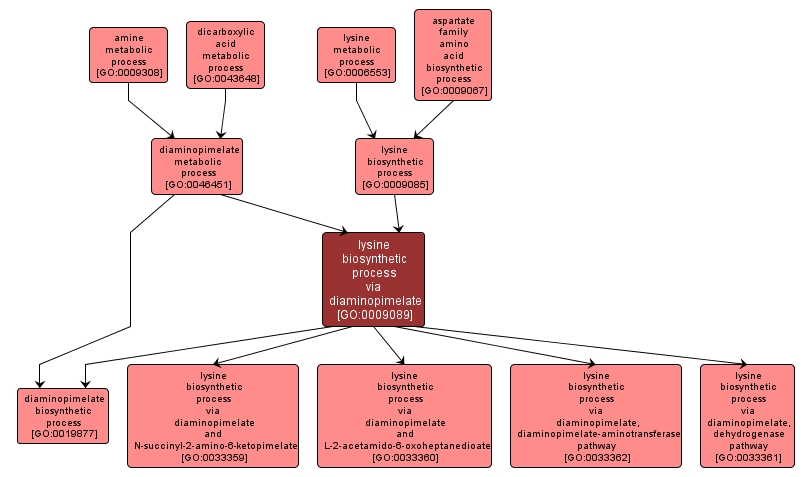GO TERM SUMMARY
|
| Name: |
lysine biosynthetic process via diaminopimelate |
| Acc: |
GO:0009089 |
| Aspect: |
Biological Process |
| Desc: |
The chemical reactions and pathways resulting in the formation of lysine, via the intermediate diaminopimelate. |
Synonyms:
- lysine anabolism via diaminopimelate
- diaminopimelic acid pathway
- diaminopimelate pathway
- lysine synthesis via diaminopimelate
- lysine biosynthetic process via diaminopimelic acid
- lysine biosynthesis via diaminopimelic acid
- lysine formation via diaminopimelate
|
|

|
INTERACTIVE GO GRAPH
|














